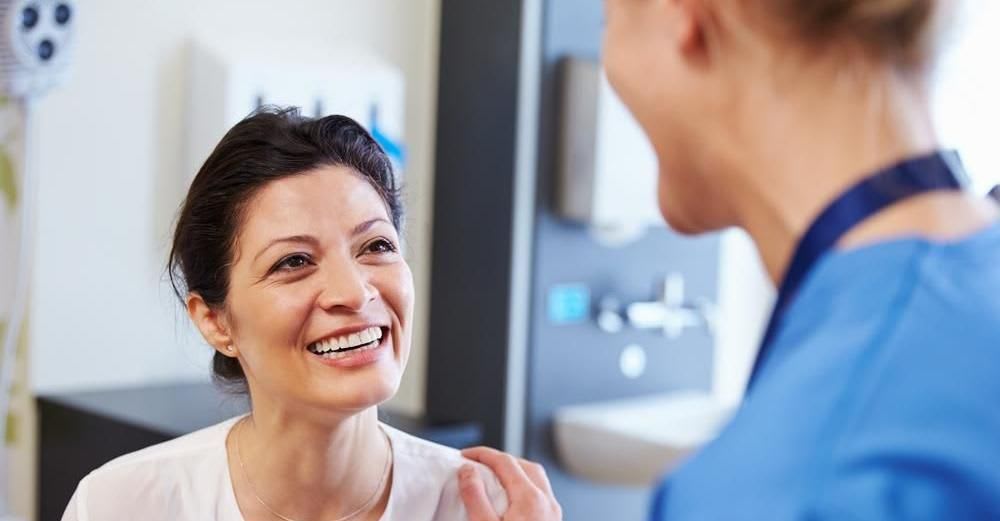What All Healthcare Professionals Need to Know About Bullying
October has been designated National Bullying Prevention Awareness Month. Here’s a closer look at the issue, along with how healthcare professionals are positioned to play a vital role in protecting against bullies and safeguarding public health.
- Student Tips

We often think about bullying in the context of elementary school bus rides, cafeterias, and playgrounds. However, bullying occurs across all ages and settings -- including throughout middle school, high school, college and even in the workplace. Factor in the prevalence of internet bullying and the anonymity it allows, and the problem has only escalated over the past decade.
To help shine the light on this important topic, October has been designated National Bullying Prevention Awareness Month. Here’s a closer look at the issue, along with how healthcare professionals are positioned to play a vital role in protecting against bullies and safeguarding public health.

Bullying Psychology 101
Psychology Today defines bullying as “a distinctive pattern of harming and humiliating others, specifically those who are in some way smaller, weaker, younger or in any way more vulnerable than the bully. Bullying is not garden-variety aggression; it is a deliberate and repeated attempt to cause harm to others of lesser power. It's a very durable behavioral style, largely because bullies get what they want—at least at first.”
Bullying behavior can seem incomprehensible to many of us. However, a growing body of evidence is expanding what we know about the psychology of bullying. Explains Cyberbully, “It’s easy to just lump these kids into the ‘bad eggs’ category, but the reality goes years back, all the way into a child’s upbringing and their years in preschool….More and more research is showing that bullying behaviors are developed between toddler and preschool years, and further engrained into a child’s communication style as they continue to progress through elementary school with the behavior unchecked.”
In other words, we now know that “bullies are made not born,” and that the roots of bullying behaviors trace back to how bullies are parented. Continues Cyberbully, “The trouble is, bullying behavior is something that is developed over years and years of difficult circumstances, threatening parenting styles, and a lack of healthy social interactions – it could take years to correct, and indeed, there may be no rehabilitating a bully.”

Unfortunately, making sense of how bullies come to be doesn’t make it easier on their victims, for whom the repercussions can be both severe and lasting, according to scientists. “To my surprise at least, there were some very strong long-term effects on their risk for depression, anxiety, suicidality, a whole host of outcomes that we know just wreak havoc on adult lives,” clinical psychologist William Copeland told Huffington Post.
The Role of Healthcare Professionals
Healthcare professionals can fight the battle against bullying in several valuable ways. For starters, they can be on the lookout for warning signs of bullying, including unexplainable injuries; lost or destroyed property; frequent illness and/or faking illness; changes in eating habits; difficulty sleeping and/or frequent nightmares; declining academic performance; sudden loss of friends or avoidance of social situations; feelings of helplessness or loss of self-esteem; and self-destructive behaviors. This is particularly important given that less than 40 percent of kids voluntarily report bullying to adults.
But healthcare professionals can play a critical part in identifying kids who may be bullying others, as well. These warning signs include getting into physical and verbal fights; having friends who bully others; increasing aggression; getting sent to detention or the principal’s office frequently; having unexplained new belongings and money; blaming others for their problems; inability to accept responsibility for their actions; are competitive and/or concerned about their popularity and reputation.
Dr. Sheila Wijayasinghe told The Globe and Mail, “Our role as physicians who care for kids is to screen, advocate and intervene early if bullying is a concern. With every routine check-up, we should ask about their various relationships to see if any issues can be resolved before they escalate. According to the Canadian Family Physician, it is important to identify children who are at high risk of bullying. Children with physical or developmental disabilities, those who identify as gay or transgendered and those who are overweight are at higher risk than others. Children who witness or experience domestic violence are twice as likely to bully other children.”

To that end, not only are experts calling for healthcare practitioners to screen for bullying, but also to familiarize themselves with next steps aimed at empowering both patients and their parents to take action against bullying behaviors. Additionally, advises a 2017 Journal of Family Practice article, physicians should also “support school-based and community-oriented intervention programs, which have been shown to be among the most effective strategies for curbing bullying.”
Bullying in Healthcare
Healthcare professionals may even be able to step up in their own workplaces -- where it may be needed most, according to research indicating that the healthcare profession has among the highest levels of workplace bullying. According to a report from The Guardian, meanwhile, bullying is rampant even in the National Health System (NHS). In fact, just under a quarter of NHS staff report having been bullied, but less than half report it. A public inquiry report from the Mid Staffordshire NHS Foundation Trust’s Public Inquiry concludes, “The NHS has developed a widespread culture more of fear and compliance, than of learning, innovation and enthusiastic participation improvement.”
The mandate for those looking to reverse the trend? ““The common culture of caring requires a displacement of a culture of fear with a culture of openness, honesty and transparency, where the only fear is the failure to uphold the fundamental standards and the caring culture.”

Says Wijayasinghe, “Violence is a public-health issue, and doctors can help families of both children who bully and who are bullied by providing another trusted adult for kids to talk to. With the heightened awareness in the media of the potential tragedies that occur due to bullying, this is an important moment for schools, parents and all others who care for children to discuss bullying with a view to prevention.”
What better time to look around and see how you can make a difference by stepping up against bullying than during National Bullying Prevention Month? The reality is that bullies often “hide” in plain sight for one simple reason: Their behaviors are allowed to continue. The more people who step up and speak out, the fewer places bullies have to hide, and the kinder, more inclusive the world becomes.

Joanna Hughes
Author
Joanna worked in higher education administration for many years at a leading research institution before becoming a full-time freelance writer. She lives in the beautiful White Mountains region of New Hampshire with her family.
Read related articles

What You Should Know If You Want To Practice Medicine Abroad

Five Countries to Choose for Nursing Degrees
